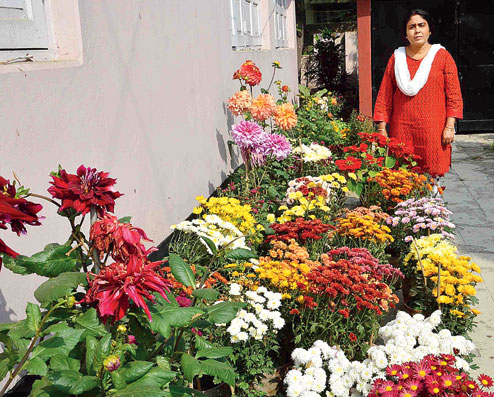It may be passed off as cherry in the market but the Karamcha is a delicious fruit in its own right. Known as Karonda in Enlgish, it is mostly grown in Salt Lake as a specimen ornamental plant for its fruits.
The Karamcha is also a medicinal plant as the fruits are a rich source of iron and contain a fair amount of Vitamin C and so effective in curing anaemia. It is a hardy and bushy plant that grows well without much care and because of its thorny nature it is often grown as a hedge and it serves as a fencing plant too. The Karamcha is scientifically known as Carissa carandas and belongs to the Apocynaeceae family.
Climate and soil- Due to its hardy drought-tolerant nature, the Karamcha thrives well throughout tropical and sub-tropical climates. They have wide adaptability and can grow in various soils, but heavy rainfall and waterlogging are not desirable. Nutrients are essential for higher productivity and quality fruits. Its leaves rot easily after shedding and so are biodegradable and enrich the soil with various mineral nutrients.
Varieties- There are no well-established varieties of Karamcha but some cultivated types are selected on the basis of fruit colour, such as green fruited, whitish fruit with pink blush and dark purple fruited. Some varieties like Pant Suvana, Pant Monohar, Narendra Selection etc. are considered promising for the future. Natal Palm, an African species bearing large dark red fruits, is also grown in some parts of India.A new variety “The Kamal” has been developed by the Central Institute of Arid Horticulture, which is better than other varieties in quality fruit production. The fruit is red in colour.
Cultivation- Generally Karamchas are grown from seed and vegetative propagation techniques such as cutting, grafting and layering are not commonly practised. But air-layering is possible and should be done with 6-8mm thick branches between July and August with Rootex (a hormone powder for root growth). This would give the highest success and take the least number of days to initiate primary roots.
Pits of 45cmx45cmx45cm size are to be dug and filled with organic compost and soil in 1:2 proportion. Thereafter, one should dig a small hole according to the size of the root ball. Place the plant in the hole and replace the plant by taping the soil firmly. In case of planting on a fence or hedge, maintain a distance of 1m to 1.5m between the two plants.
Aftercare- The Karamcha is a hardy plant and requires little care once it has settled into the soil and attained proper growth. In regular plantations it can be trained in single or double stem (branching).
For proper training, lateral shoots should be removed up to 15 to 20cm height from ground level. Suckers at the base should be removed timely and hoeing should be done from time to time to remove weeds. Bearing plants do not require pruning.
.jpg)
Karamchas grown as protective hedges around any garden do not require any pruning except old hedges which are to be cut to induce new growth and form a thick impenetrable barrier. To maintain desired shape and to keep the stem clean in young plants, unwanted twigs should be pruned as and when required.
The water requirement of Karamchas is very low. It is beneficial to irrigate new plants and to manure grown ones. For better growth and yield, apply well-rotten farmyard manure (FYM) or compost at the rate of 10kg per plant at the onset of monsoon. Deficiency of nutrients can be corrected by applying 50, 100 and 150g per plant of nitrogen, phosphorus and potassium respectively.
Harvesting- Plants raised from seed start bearing fruit after three years of planting. They usually flower during March and fruits are ready for harvest after 100 to 110 days of fruit setting. The fruits ripen between July to September and after harvesting must be kept in the shade. Mature fruits are most suitable for making pickle, jelly and chutney.
Kumquat
Sweet Lemon or Kumquat is fast becoming a popular option to make bonsais. The fruits are small and golden yellow with thin rind and are either round or oval. They can be eaten unpeeled and are a favourite among bonsai gardeners due to their dwarfish nature.
The Kumquat was formerly included within the genus citrus but is now classified as Fortunella. It is scientifically known as Fortunella Japonica and is native to China. They are now cultivated in almost all Asian countries along with Europe and United States.
Kumquats are small evergreen ornamental shrubs with dense branches and dark glossy green leaves. They are hardier than other citrus trees described earlier in this column and are ideal tree for growing in containers. In China and other Asian countries the plant symbolises good luck and is kept as a houseplant and some cultivars have a delicious aroma.
Kumquats do not grow well from seeds. They are vegetatively propagated by cutting or air layering. They can thrive in a wide range of soil and climatic conditions and Kumquats generally crop heavily and ripen during spring. Ripe fruits make a spectacular display amidst green foliage. The fruits are mainly used for making marmalades and jellies. Kumquats are also rich in Vitamin C and have good levels of B-complex group of vitamins.
To be continued












